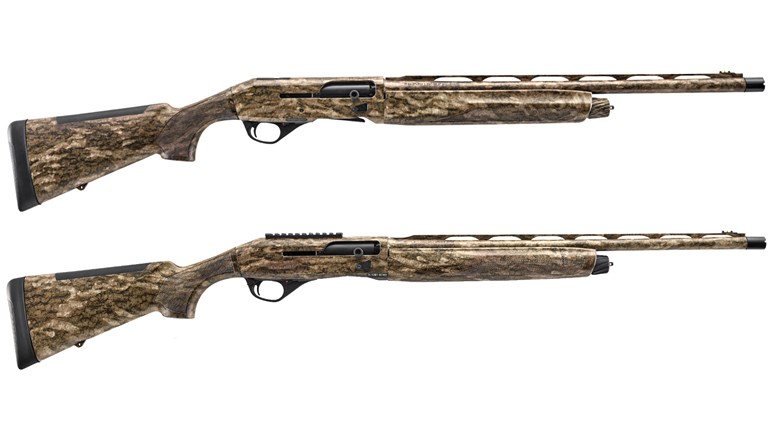
If we’re being honest, a small, flat pistol like the popular .380 ACP Smith & Wesson Bodyguard in a pocket holster is often the only gun many of us can carry on a consistent basis.
It’s not often I get to quote Voltaire in a gun magazine, but he’s the guy who wrote “le mieux est l’ennemi du bien” or “the best is the enemy of the good.”
This came up in a recent conversation with fellow writer Caleb Giddings in which there was much lamenting of the obsession the tactical world has with the ideal carry setup. Anyone who’s the Designated Gun Person in their social circle has probably been asked what the best choice for carry is, and how does one go about answering that question honestly and authoritatively?
The school solution, at least according to the internet gun experts, is some service-size, double-stack semi-automatic chambered in a duty caliber, preferably with a red-dot sight; a high-intensity weapon-mounted light and maybe some custom work, and carried with spare magazines.
Taken in a vacuum, that’s a hard concept with which to argue. If you had to solve an unknown firearm self-defense problem with a pistol, that’s the setup most likely to cover all the bases. If you can’t solve a shooting problem with Glock G34 MOS wearing a Trijicon RMR and a SureFire light, you probably needed a long gun, or friends with long guns or, better yet, you should have stayed home that day because it was an unsolvable Kobayashi Maru problem in the first place.
But, most people look at this answer and start weighing it against their real-world pros and cons. That full setup is expensive, it can be time-consuming and involve a lengthy period of trial-and-error to get configured so it can be carried comfortably and it’s a hassle to suit up with the full Bat Belt every morning. The downsides could involve getting ostracized by the in-laws if they notice a poorly concealed blaster, or maybe being unable to carry at work without violating company policy. That’s when people start thinking “Not only have I never been attacked by a team of terrorist ninjas in a mall food court, like a lot of Americans I haven’t even set foot in a mall food court since 2004, when I was 18.”
And then another subcompact .380 ACP and pocket holster gets sold.
Now our hypothetical new carrier gets assailed by supposed allies who practically berate them for not being “serious” about personal protection. How are you supposed to properly defend yourself and freedom, they ask, with a pocket pistol?
I’m ashamed to admit that in the past I have strayed way too close to that behavior, but like Giddings, I’ve become something of a conscientious objector in the TactiCool Wars.
If someone has decided that the best fit for the risk profile in their day-to-day life, the firearm that is most comfortable for them to carry and least likely to be left at home as too big of a hassle, is a little pistol in a pocket holster, that’s fine. I’m not a missionary out to change their mind. All I want to do is make sure that my friend who’s chosen that lifestyle gets the best advice regarding potential gear that they can find.
If they’re going to carry a pocket pistol, is it a good-quality and reliable one? Have they selected ammo based on reliable functioning and not glitzy advertising? Can I invite them to the range and help them get some practice in every now and again?
Rather than pooh-poohing their choice of firearm, I will help them find specialists who have instruction tailored specifically toward running little guns efficiently and deploying them from a pocket, like Claude Werner at Tactical Professor or Chuck Haggard of Agile/Training & Consulting.
If someone wants to buck trends or fads and carry a sidearm that’s currently out of fashion with the “cool kids”—like a revolver or a 1911-pattern pistol—I’d rather they pick one that works and help them get quality instruction in operating it efficiently than waste time beating them over the head with Spock-like verbiage about how totally unoptimized that choice is. People were defending themselves from criminals with those when Gaston was still peddling curtain rods, after all; it’s not like they’re carrying flintlocks.
There’s a hidden downside to this insistence that if someone does not choose the newest, best and most optimal solution, then they’re some sort of unserious person who should not even bother. That downside is that they might not bother, and that’s a loss for all of us.
The objective, after all, is to make sure that good guys and gals can feel empowered to take advantage of their right to carry. That’s the only effective counter to all the bad guys who aren’t dissuaded by laws prohibiting it.
So, these days I am trying to be encouraging, rather than being the CCW fashion police, at least inside the rather broad boundaries of safety and common sense.
After all, to paraphrase Patrick Henry, the great objective is that every man—and woman—be armed.





































